Year in Review 2023

For the MIT Alumni Association (MITAA), Fiscal Year 2023 was a year focused on presidential transition, reawakening our alumni community from Covid “hibernation,” and creating a strategic plan to carry the MITAA from 2023 to 2026.
With those priority areas in mind, the MITAA also continued its programming, events, and annual fundraising efforts. Results were strong, with the Association surpassing its initial FY2023 alumni engagement goal* by five points, reaching 60 percent as the fiscal year ended on June 30.
The collaborative Alumni Association professional team, in partnership with leadership volunteers and stakeholders across campus, engaged deeply with the presidential search process, transition, and ultimate inauguration of President Kornbluth; went on the road to meet with regional clubs and communities to jumpstart activities and involvement; pushed hard to yield solid fundraising results despite economic headwinds and MIT leadership transition; listened to and managed alumni sentiment in a variety of ways; and made a host of other investments small and large in the well-being and strength of our MIT alumni community.
Through a collaboration between the Strategic Plan Refresh Ad Hoc Committee, composed of current and past MITAA Board members and the MITAA’s leadership team and staff, the Association created SP26―a strategic plan for the next three fiscal years. The plan builds around three equally important pillars: Community, Philanthropy, and Culture. With prioritized cohorts and outcomes, the plan offers a structure and path for the years ahead, and simultaneously offers flexibility as MIT’s vision adjusts with new leadership.
With optimism for the future, the MITAA submits the following detailed report on the year just completed.
*The MIT Alumni Association measures the engagement of its alumni in three ways: face-to-face; philanthropic; and virtual.
Read about the MIT Alumni Association’s 2022 – 2023 Highlights (PDF)
FY23 Volunteers
FY23 Donors
Reports to the President Archive
Suggestions or feedback?
MIT’s alumni — entrepreneurs, researchers, policymakers, and above all, leaders — have helped to shape the world we know today. From 3-D printing to bionic prostheses, many of the products and services that define the modern world have sprung from the minds and hands of MIT’s brilliant alumni community .
MIT’s nearly 147,000 alumni represent one of the most talented, innovative, and networked communities on the planet. Many remain deeply involved in the life of the Institute. They volunteer , serve on boards, head up regional alumni clubs , and generously support MIT’s students, faculty, and staff. As individuals, their contributions are extraordinary. As a community, their impact is infinite.

Get Involved
Join a club . Start a group . Make an annual gift . Attend an event . MIT draws great strength from its graduates’ ongoing engagement — with each other and with the Institute. Our alumni can always find community at MIT, no matter where in the world they are.
Top Resources
- MIT Alumni Association
- Alumni Directory
- Alumni Career Resources
- Lifelong Learning
- Give to MIT
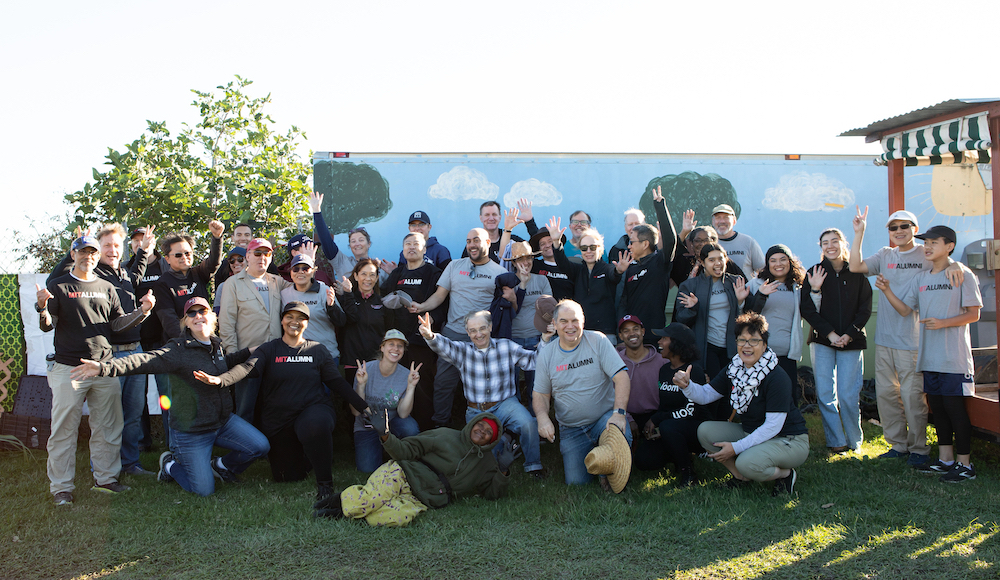
MIT Alumni News
In their communities and their professions, locally and around the globe, MIT’s alumni are vital to our vision of making a better world. Through MIT News , the Alumni Association’s Slice of MIT blog , Resource Development’s Spectrum , and MIT News in Technology Review , you can keep up with our graduates’ remarkable impact around the globe.
- Slice of MIT Blog
- MIT News Office
- MIT News in Technology Review
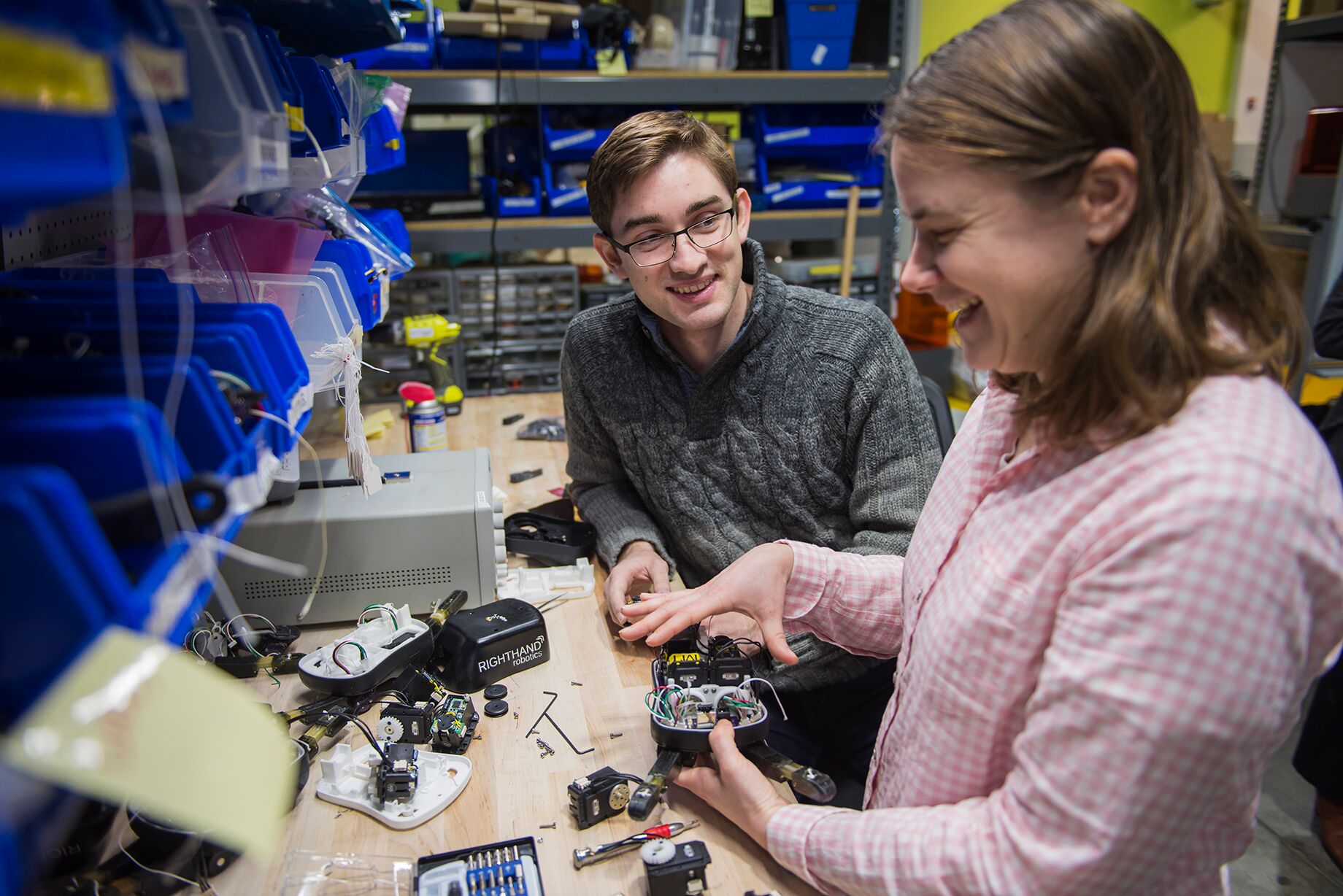

Michigan Alumni Travel
Whether you’re looking for an adventure close to home or a journey a world away, our travel collection has something for everyone.
Find a Trip
The Michigan Alumni Travel program, an exclusive benefit for Alumni Association members, is ready to help you turn your travel dreams into reality with our diverse lineup of trips. The world is waiting for you…

Michigan Alumni Travel FAQ
Meet your dedicated Michigan Alumni Travel team and get answers to some of the most commonly asked questions about traveling with us.
Travel Insurance
While every effort is made to ensure your vacation is a safe and happy one, unexpected events can occur. Get extra peace of mind with travel insurance.

Michigan Alumni Travel Community
Talk all things travel with fellow Wolverines. Get tips on an upcoming trip, seek out and share recommendations, and participate in general travel discussions.
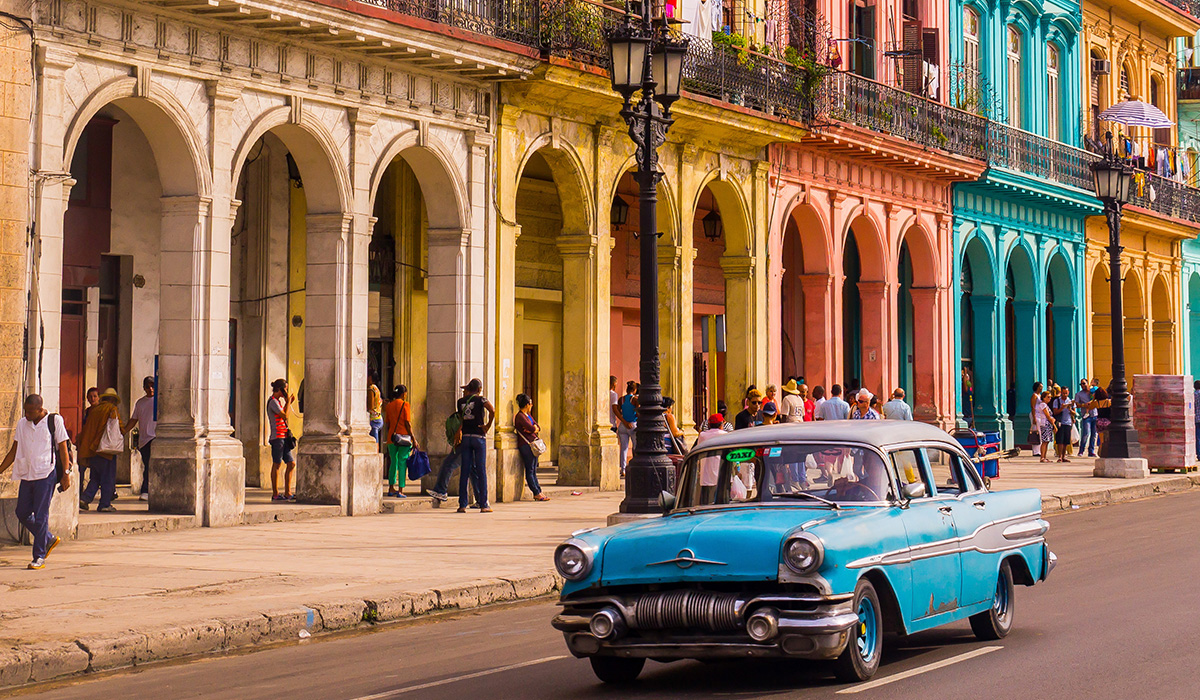
Suggestions or feedback?
MIT News | Massachusetts Institute of Technology
- Machine learning
- Social justice
- Black holes
- Classes and programs
Departments
- Aeronautics and Astronautics
- Brain and Cognitive Sciences
- Architecture
- Political Science
- Mechanical Engineering
Centers, Labs, & Programs
- Abdul Latif Jameel Poverty Action Lab (J-PAL)
- Picower Institute for Learning and Memory
- Lincoln Laboratory
- School of Architecture + Planning
- School of Engineering
- School of Humanities, Arts, and Social Sciences
- Sloan School of Management
- School of Science
- MIT Schwarzman College of Computing
A delicate dance
Press contact :.
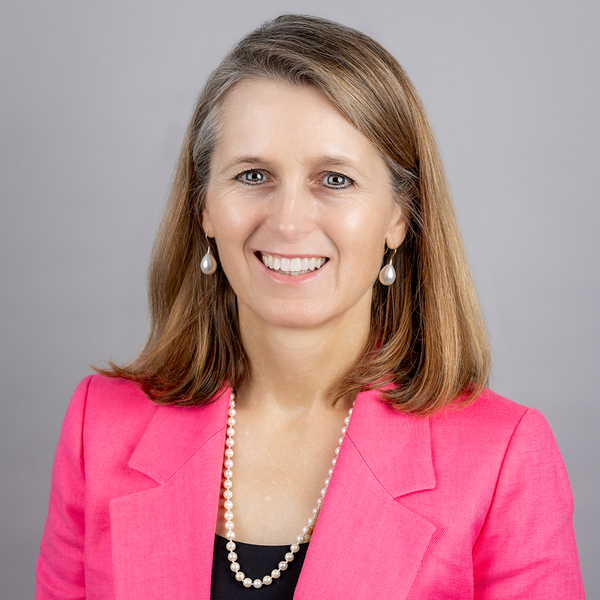
Previous image Next image
In early 2022, economist Catherine Wolfram was at her desk in the U.S. Treasury building. She could see the east wing of the White House, just steps away.
Russia had just invaded Ukraine, and Wolfram was thinking about Russia, oil, and sanctions. She and her colleagues had been tasked with figuring out how to restrict the revenues that Russia was using to fuel its brutal war while keeping Russian oil available and affordable to the countries that depended on it.
Now the William F. Pounds Professor of Energy Economics at MIT, Wolfram was on leave from academia to serve as deputy assistant secretary for climate and energy economics.
Working for Treasury Secretary Janet L. Yellen, Wolfram and her colleagues developed dozens of models and forecasts and projections. It struck her, she said later, that “huge decisions [affecting the global economy] would be made on the basis of spreadsheets that I was helping create.” Wolfram composed a memo to the Biden administration and hoped her projections would pan out the way she believed they would.
Tackling conundrums that weigh competing, sometimes contradictory, interests has defined much of Wolfram’s career.
Wolfram specializes in the economics of energy markets. She looks at ways to decarbonize global energy systems while recognizing that energy drives economic development, especially in the developing world.
“The way we’re currently making energy is contributing to climate change. There’s a delicate dance we have to do to make sure that we treat this important industry carefully, but also transform it rapidly to a cleaner, decarbonized system,” she says.
Economists as influencers
While Wolfram was growing up in a suburb of St. Paul, Minnesota, her father was a law professor and her mother taught English as a second language. Her mother helped spawn Wolfram’s interest in other cultures and her love of travel, but it was an experience closer to home that sparked her awareness of the effect of human activities on the state of the planet.
Minnesota’s nickname is “Land of 10,000 Lakes.” Wolfram remembers swimming in a nearby lake sometimes covered by a thick sludge of algae. “Thinking back on it, it must’ve had to do with fertilizer runoff,” she says. “That was probably the first thing that made me think about the environment and policy.”
In high school, Wolfram liked “the fact that you could use math to understand the world. I also was interested in the types of questions about human behavior that economists were thinking about.
“I definitely think economics is good at sussing out how different actors are likely to react to a particular policy and then designing policies with that in mind.”
After receiving a bachelor’s degree in economics from Harvard University in 1989, Wolfram worked with a Massachusetts agency that governed rate hikes for utilities. Seeing its reliance on research, she says, illuminated the role academics could play in policy setting. It made her think she could make a difference from within academia.
While pursuing a PhD in economics from MIT, Wolfram counted Paul L. Joskow, the Elizabeth and James Killian Professor of Economics and former director of the MIT Center for Energy and Environmental Policy Research, and Nancy L. Rose, the Charles P. Kindleberger Professor of Applied Economics, among her mentors and influencers.
After spending 1996 to 2000 as an assistant professor of economics at Harvard, she joined the faculty at the Haas School of Business at the University of California at Berkeley.
At Berkeley, it struck Wolfram that while she labored over ways to marginally boost the energy efficiency of U.S. power plants, the economies of China and India were growing rapidly, with a corresponding growth in energy use and carbon dioxide emissions. “It hit home that to understand the climate issue, I needed to understand energy demand in the developing world,” she says.
The problem was that the developing world didn’t always offer up the kind of neatly packaged, comprehensive data economists relied on. She wondered if, by relying on readily accessible data, the field was looking under the lamppost — while losing sight of what the rest of the street looked like.
To make up for a lack of available data on the state of electrification in sub-Saharan Africa, for instance, Wolfram developed and administered surveys to individual, remote rural households using on-the-ground field teams.
Her results suggested that in the world’s poorest countries, the challenges involved in expanding the grid in rural areas should be weighed against potentially greater economic and social returns on investments in the transportation, education, or health sectors.
Taking the lead
Within months of Wolfram’s memo to the Biden administration, leaders of the intergovernmental political forum Group of Seven (G7) agreed to the price cap. Tankers from coalition countries would only transport Russian crude sold at or below the price cap level, initially set at $60 per barrel.
“A price cap was not something that had ever been done before,” Wolfram says. “In some ways, we were making it up out of whole cloth. It was exciting to see that I wrote one of the original memos about it, and then literally three-and-a-half months later, the G7 was making an announcement.
“As economists and as policymakers, we must set the parameters and get the incentives right. The price cap was basically asking developing countries to buy cheap oil, which was consistent with their incentives.”
In May 2023, the U.S. Department of the Treasury reported that despite widespread initial skepticism about the price cap, market participants and geopolitical analysts believe it is accomplishing its goals of restricting Russia’s oil revenues while maintaining the supply of Russian oil and keeping energy costs in check for consumers and businesses around the world.
Wolfram held the U.S. Treasury post from March 2021 to October 2022 while on leave from UC Berkeley. In July 2023, she joined MIT Sloan School of Management partly to be geographically closer to the policymakers of the nation’s capital. She’s also excited about the work taking place elsewhere at the Institute to stay ahead of climate change.
Her time in D.C. was eye-opening, particularly in terms of the leadership power of the United States. She worries that the United States is falling prey to “lost opportunities” in terms of addressing climate change. “We were showing real leadership on the price cap, and if we could only do that on climate, I think we could make faster inroads on a global agreement,” she says.
Now focused on structuring global agreements in energy policy among developed and developing countries, she’s considering how the United States can take advantage of its position as a world leader. “We need to be thinking about how what we do in the U.S. affects the rest of the world from a climate perspective. We can’t go it alone.
“The U.S. needs to be more aligned with the European Union, Canada, and Japan to try to find areas where we’re taking a common approach to addressing climate change,” she says. She will touch on some of those areas in the class she will teach in spring 2024 titled “Climate and Energy in the Global Economy,” offered through MIT Sloan.
Looking ahead, she says, “I’m a techno optimist. I believe in human innovation. I’m optimistic that we’ll find ways to live with climate change and, hopefully, ways to minimize it.”
This article appears in the Winter 2024 issue of Energy Futures , the magazine of the MIT Energy Initiative.
Share this news article on:
Related links.
- Catherine Wolfram
- MIT Energy Initiative
- MIT Sloan School of Management
Related Topics
- Climate change
- Sustainability
- Fossil fuels
- International relations
- Developing countries
Related Articles
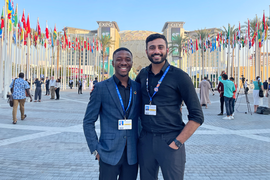
Reflecting on COP28 — and humanity’s progress toward meeting global climate goals
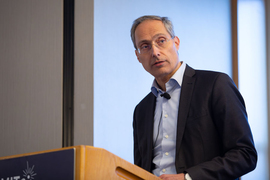
Meeting the clean energy needs of tomorrow
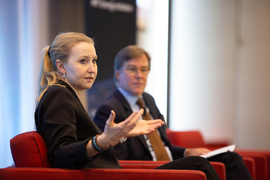
How to decarbonize the world, at scale
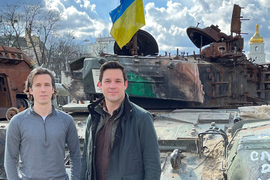
Responding to Ukraine’s “ocean of suffering”
Previous item Next item
More MIT News

Is it the school, or the students?
Read full story →
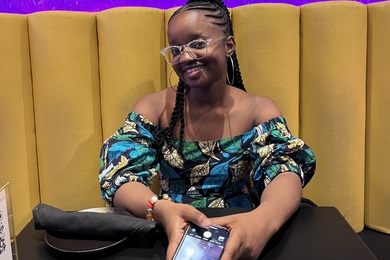
Student spotlight: Victory Yinka-Banjo
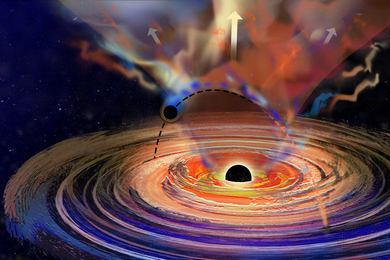
Persistent “hiccups” in a far-off galaxy draw astronomers to new black hole behavior

New software enables blind and low-vision users to create interactive, accessible charts

Engineers find a new way to convert carbon dioxide into useful products

Unlocking mRNA’s cancer-fighting potential
- More news on MIT News homepage →
Massachusetts Institute of Technology 77 Massachusetts Avenue, Cambridge, MA, USA
- Map (opens in new window)
- Events (opens in new window)
- People (opens in new window)
- Careers (opens in new window)
- Accessibility
- Social Media Hub
- MIT on Facebook
- MIT on YouTube
- MIT on Instagram
You are using an outdated browser. Please upgrade your browser or activate Google Chrome Frame to improve your experience.

- Leadership Components
- Treks & Travel
- Action Learning
- AI & Machine Learning at LGO
- Data Analysis & Analytics
- Manufacturing / Lean Optimization
- Product Design & Development
- Research & Development
- Robotics & Automation
- Supply Chain
- Sustainability
- Systems Optimization
- Aeronautics and Astronautics
- Chemical Engineering
- Civil and Environmental Engineering
- Electrical Engineering and Computer Science
- Mechanical Engineering
- Nuclear Science and Engineering
- Operations Research
- Class Profile
- Meet Our Students
- Diversity & Inclusion
- Career Placement Report
- Career Statistics
- Application Directions
- Financial Aid & Costs
- Admissions Events
- LGO Early Admission
- Give to MIT LGO
- Alumni Networking
- Alumni Resources
- Partner Companies
- Current Student Resources
The MIT LGO alumni community is a lifelong network formed among over 1,400 LGO graduates. The community shares opportunities to sustain the friendships and expertise developed during the program. Resources include:
- LGO Alumni Resources portal: The Alumni Board recently launched a consolidated portal of resources that support LGO alumni in their professional journeys, covering jobs, networking, mentoring and career development.
- Information about post-LGO careers: MIT Sloan career development services helps alumni make career transitions after they have left the school. As our career statistics and notable alumni detail, alumni enjoy success long after they’ve finished the LGO program, often thanks to their continued connections to other graduates.
- Alumni networking: Throughout the year, LGO alumni and students stay in touch with LGO and MIT at a variety of events. The annual MIT LGO Alumni Conference is a major event where hundreds gather to address timely issues in operations and industry.
- Alumni Conference: The 2023 Alumni Conference will be held at MIT Campus over November 2-3, 2023.
- Alumni Board: Leaders in the LGO alumni community take responsibility to further the bond between the LGO program and its alumni. Key activities include the annual LGO Alumni Conference, LGO governance representation, and networking events. A team of Class Captains also ensures every LGO cohort stays in close touch with each other and with the broader community.
- Women of LGO: WLGO, founded in 2007, is an alumni forum dedicated to maintaining ties among female students and graduates. WLGO pursues career development and networking initiatives for its members and works with the LGO program office to recruit outstanding women candidates. For information on WLGO, contact Annie Kang (LGO ’12).
- MIT LGO Under-represented Minority Alumni Group (LGO URMAG): LGO URMAG, founded in 2020, aims to bring more underrepresented minority students to the LGO program and to help strengthen a more diverse community of students and alumni through networking and mentoring. For information on LGO URMAG, contact Valery Lorou (LGO ’19).
The program relies on the generosity and stewardship of its alumni community to help support its mission and key initiatives. Please learn about how you can give to LGO .


Florida Tech Homecoming
- 150 W. University Blvd.
- Melbourne, FL 32901
- (321) 674-7190
2024 Alumni Award Winners

Dave Mecartney '80, '82
David Mecartney, driven by a childhood dream of becoming a pilot, matriculated at Florida Institute of Technology in 1978 and graduated with a bachelor’s degree in Flight Technology & Aviation Management. He obtained all his of his flight ratings including a CFI. After graduating in 1982, Mr. Mecartney was employed as an entry-level planner at BNP Associates, Inc., a worldwide consulting firm specializing in the design of baggage handling, cargo handling, security screening, and parcel handling systems related to airports.
When he started at BNP, the company had a single office in Stamford, CT with only 7 employees. After working his way through the company, he became President of BNP in 1995 and has since grown and proliferated the company to employ over 125 personnel across multiple offices around the world. Under David’s leadership, BNP has provided consultancy services to some of the largest airports in the world, including Singapore, Chicago, Hong Kong, London, Los Angeles, and Miami. While President, he continued to pursue his passion for flying. He now flies his own Cessna Citation CJ3+ and has accumulated over 7000 hours of flight time. Along with flying, David also endeavors several philanthropic interests, especially support for Colorado Children’s Hospital and research for finding the cure for Pancreatic Cancer. His interests outside of flying include golf, road biking, and his extended family.
Mecartney also founded the BNP Associates Scholarship fund for minority students pursuing degrees at Florida Tech in Aviation, Science, and Engineering. He is an active member of the College of Aeronautics Advisory Board.
David has three children. He currently lives in Jackson Hole, WY, and Scottsdale, AZ with his fiancé Charlene.
Misty Marot '99, '21 MBA
Misty Marot is the sole owner and CEO of Novel Engineering, Inc., Medical Resource Solutions, LLC, and Construction Resource Solutions, LLC. Marot is additionally co-owner of Medworx, Inc. and recently launched its first product, worx360, an app that focuses on thorough matchmaking for medical facilities and clinicians. She oversees strategy, operations, culture, HR, finance, and policy. Maro believes in a #peoplefirst for a #culturefirst approach to owning and operating a business. These values are woven into every aspect of her approach to leadership and business foundation.
Marot has her sights set on impactfully supporting this community that has always supported her and her entrepreneurialism. Viewing her companies as a trusted partner by her customers is the ultimate measurement of success. Genuine interaction and clear, candid communication, the secret sauce to growing and maintaining customer relationships, enable customer-tailored experiences that are critical to mutual success.
Marot is an alum of Florida Tech with a Bachelor of Science degree in Psychology and an MBA. She serves on the Florida Tech College of Science and Engineering Advisory Board, U.S. Rep. Bill Posey’s Small Business Advisory Board, Florida Tech President's Circle, the United Way Space Coast Board, the Economic Development Commission, and the Rotary Eau Gallie.
Among her numerous honors are recognition for business and leadership at...
- GrowFL - Florida Companies to Watch
- NASA Cube Quest Challenge GT1
- Business Leader of the Year Honoree – Space Coast Business Magazine
- Entrepreneur of the Year – Women Who Rock Awards – WeVenture and Florida Institute of Technology
- Innovation Company of the Year – Space Coast Economic Development Commission
- Technology Executive of the Year – Bill Posey Certificate of Congressional Recognition
David Nesbitt '87
David Nesbitt graduated from Florida Tech in 1987 with a BS in Ocean Engineering. While at Florida Tech, Nesbitt rowed on the crew team culminating with a silver medal finish at the Dad Vails in 1986. He served on the Campus Activity Board and was a staff photographer for both the Crimson and Ad Astra. Nesbitt led his senior Marine Field Projects team to the International Human Powered Speed Championships in Vancouver, BC. The event was featured on the Discovery Channel and at the 1986 World Fair ultimately gaining international exposure for Florida Tech. Through his Ocean Engineering curriculum, Nesbitt was introduced to Composite Materials. He developed a strong interest in these modern materials which later became the focus of his career and entrepreneurial endeavors.
Following his graduation in 1987, he worked with several composite materials-related companies. Starting at Lindenberg Yachts (Cocoa, FL) and then with Consulier Industries (Riviera Beach, FL). While in Riviera Beach, Nesbitt was the Lead Design Engineer of an innovative sportscar called the Consulier GTP. Weighing in at less than half the weight of conventional passenger vehicles, the composite materials design attracted interest from automakers around the world. The car was the first US DOT-certified all-composite passenger vehicle and from a technology standpoint, was ahead of its time offering significant gains in performance, efficiency, and crashworthiness.
In the early ‘90s, Nesbitt moved away from automotive and secured a position within aerospace. He managed the production of acoustically treated aircraft engine cowlings for DC-8 and B707 aircraft. These carbon fiber composite cowlings called “hush kits” were used to reduce engine noise enabling obsolete aircraft to meet stringent noise requirements being introduced at that time. It was Nesbitt’s introduction to flight-critical composite structures. While at this aerospace manufacturing Company, Nesbitt also obtained other key manufacturing experience enabling him to develop and commercialize new manufacturing methods for flight-critical aircraft components.
In 1993, Nesbitt founded Matrix Composites Inc. He and his two partners Mr. Ken Swarner (ASU Industrial Engineering ‘81) and Mr. Doug Dawson (FIT OE ’87) started the Company with its original factory in Palm Bay, Florida. The Company differentiated itself by focusing on precision molding of complex flight-critical structures. The self-financed business grew organically from just several employees to more than 120 technicians, production personnel, administrators, and engineers before its acquisition by ITT Corporation (White Plains, NY) in 2019.
Matrix was able to secure long-term manufacturing agreements on many notable aerospace and defense programs. In 2005, the Matrix became a key supplier of the F22 Raptor (5 th generation fighter.) Subsequently, Matrix supported F35 production by licensing its trademarked HiRPM® Process to Lockheed Aeronautics (Palmdale, CA).
The Company currently produces flight-critical vanes, stators, and airflow surfaces for GE’s LEAP-1B and 9X engines as well as all of Pratt & Whitney’s Geared Turbo Fan(GTF) engines. Matrix hardware can be found on all Airbus NEO aircraft as well as Boeing 747, 787, and 737 Max commercial jets.
Nesbitt retired in July 2022 and resides in Melbourne Beach, Florida. He has been a long-time supporter of Florida Tech hiring many graduates, employing interns, and donating time and materials to Student Senior Design projects over the years. He now serves as an advisor and consultant to the aerospace composite industry. He is an active member of the Melbourne Yacht Club and is on the Aerospace Engineering Advisory Board at Florida Tech.
Dr. Megan Cronin '12
Dr. Megan Cronin is a dedicated and recognized teacher of dermatologic surgery and cosmetic dermatology.
She completed her residency at the University of Miami Frost Department of Dermatology and Cutaneous Surgery where she served as chief resident. She is currently serving the Academy on multiple committees including the Young Physicians Committee, the Meanoma/Skin Cancer Community Programs Committee, and the SkinPAC Committee. She was also recruited to serve on the Workgroup to Evaluate AAD Events and the Ad Hoc Task Force on Dermatological Resouces for the Intervention and Prevention of Human Trafficking.
In addition to her academic teaching responsibilities as a voluntary faculty at the University of Miami, she has a busy private practice in Melbourne, Florida. She is board-certified in both micrographic dermatologic surgery and dermatology.
She also currently serves on the Board of Directors for the Florida Society of Dermatologic Surgeons, and she has been an innovative educator in dermatologic surgery, recently co-editing the Atlas of Reconstructive Surgery after Skin Cancer Surgery with her proud uncle and grandfather.

Dr. Kristine Keane '01 Psy.D.
Dr. Kristine C. Keane, PsyD, is a clinical and sports neuropsychologist who specializes in the evaluation and treatment of concussion and mild traumatic brain injury. She is the founder and CEO of the Center for NeuroWellness since 2006.
In addition to her private practice, Dr. Keane has held the role of Clinical Director at the Hackensack Meridian Health Neuroscience Concussion Program South since 2016. Previously, she served as a Sports Neuropsychologist for Gotham FC of the National Women’s Soccer League. Her academic contributions include serving as an Assistant Professor at the Hackensack Meridian School of Medicine at Seton Hall University and consulting in the Departments of Neurology and Psychiatry at Jersey Shore University Medical Center.
Outside her professional pursuits, Dr. Keane co-authored "Be All In, Raising Kids for Success in Sports and Life," advocating for holistic youth development. She volunteers on the Brain Injury Associate of New Jersey’s Youth Sports Concussion Committee, furthering her impact beyond clinical settings.
Dr. Keane earned Bachelor’s degrees in Psychology and English from Rutgers University and completed her doctoral studies in Clinical Psychology at Florida Tech with a specialization in Neuropsychology. She completed her doctoral internship at the University of Rochester Medical Center, University of Medicine and Dentistry where she specialized in Neuropsychology and Forensic Psychology at the Rochester Psychiatric Center and Strong Memorial Medical Center.
Dr. Keane acknowledges Florida Tech's pivotal role in her career, highlighting her experience teaching both undergraduate and graduate students and leading as Student Director of Community Psychological Services, which solidified her dedication to neurological wellness and brain health.
Zachary Ewing '22
Zachary Ewing is a Florida-based Fluids Design Engineer for Test and Facility Operations at Blue Origin, where he works with pneumatic and cryogenic commodities, such as nitrogen, helium, gaseous oxygen, and gaseous hydrogen for launch sites and test stands in Florida, West Texas, and Kent, Washington.
By completing his undergraduate degree in a total of three years, he became one of the youngest engineers hired by Blue Origin starting part-time three months before graduation before transitioning to full-time. Within a year and a half of being employed at Blue Origin, Ewing received a promotion to Level II Engineer. During this time, he has worked on completing pneumatic system designs for the launch pad at LC-36 at Cape Canaveral in preparation for the launch of New Glenn, supported tanking tests of their GS1 and Lunar Modules, and developed Bulk Storage areas for liquid nitrogen for various component test chambers.
Before graduation, Ewing served as the Project Manager and Payload sub-system co-lead for his Florida Tech Senior Design Project, C.R.O.P.P. – CubeSat Research of Plant Platforms – where he oversaw 11 team members. The project entailed developing a complete CubeSat mission, capable of performing microgreen pathogen observation in microgravity conditions. This included developing thermal, communications, electrical, payload, structural, and attitude determination and control systems subsystems. His team would go on to win Best in Show – Aerospace Engineering, Northrop Grumman Best in Show, and the President’s Cup at the 2022 Student Design Showcase. This was only the second Capstone project in school history to have won every category.
Ewing also participated in undergraduate research opportunities where he developed code and finite element analysis models for determining coefficients of pressure across cascade airfoils, including variable inlet guide vanes.
Originally from Bel Air, Maryland, Ewing was attracted to Florida Tech due to its reputation within the aerospace industry and graduated from the Department of Aerospace, Physics, and Space Sciences in 2022 with a Bachelor of Science Degree in Aerospace Engineering, Summa Cum Laude.
At Florida Tech, Ewing was involved in various honor and professional societies including Phi Eta Sigma where he served as President for two years, Tau Beta Pi, Phi Kappa Phi, and the American Institute of Aeronautics and Astronautics. He was the Student Director of the Pep Band, a Student Ambassador for the Office of Admissions, and spent six weeks in Oxford studying abroad. Ewing was also recognized as the Office of First Year Experience Scholarship Recipient and Ambassador, Distinguished Student Scholar 2021 and 2022, Outstanding Student of the Year 2021 and 2022 for Aerospace, Physics, and Space Sciences, as well as Overall Outstanding Senior for 2022.
Joe Bussenger '13
Joe Bussenger grew up in Perkasie, Pennsylvania where at a young age showed passion for motorsports and rockets. By age ten Bussenger was determined to be an aerospace engineer and through the support of his family, he was able to participate in science and industrial fairs to strengthen this passion.
Bussenger attended the Florida Institute of Technology in 2009 after learning about the university through the International Science and Engineering Fair from which Bussenger earned third place for rocket-oriented research.
As a freshman and sophomore, Bussenger interned with Northop Grumman’s rocket system launch program where he supported propulsion testing for the United States’ aging minuteman and peacekeeper assets. During his junior year, Bussenger went on to become an engineering intern at SpaceX in Cape Canaveral and continued his internship while being a full-time student in his junior and senior years.
After graduating with a B.S. in Aerospace Engineering, Bussenger continued to work at SpaceX as one of the first dedicated engineers to recovery and landing operations. Bussenger was the lead engineer for SpaceX’s first Falcon 9 landing and announced to the world “The Falcon Has Landed” during that historic mission.
Over ten years at SpaceX, Bussenger was the primary landing controller for over 100 Falcon 9 landings, oversaw cargo and astronaut recovery, and managed varying groups including recovery and launch control.
Bussenger departed SpaceX as the Director of Recovery Operations in 2022 and joined Relativity Space as a Principal Operations Engineer before becoming the Director of Launch Operations and the Florida Site Director.
Bussenger lives in Viera, FL and in his free time enjoys playing hockey, motorsports, working on cars, and traveling.
© Florida Institute of Technology.
- Privacy Policy
- Campus Website
- Campus Directory
- Articles >
The Moscow Metro Museum of Art: 10 Must-See Stations
There are few times one can claim having been on the subway all afternoon and loving it, but the Moscow Metro provides just that opportunity. While many cities boast famous public transport systems—New York’s subway, London’s underground, San Salvador’s chicken buses—few warrant hours of exploration. Moscow is different: Take one ride on the Metro, and you’ll find out that this network of railways can be so much more than point A to B drudgery.
The Metro began operating in 1935 with just thirteen stations, covering less than seven miles, but it has since grown into the world’s third busiest transit system ( Tokyo is first ), spanning about 200 miles and offering over 180 stops along the way. The construction of the Metro began under Joseph Stalin’s command, and being one of the USSR’s most ambitious building projects, the iron-fisted leader instructed designers to create a place full of svet (radiance) and svetloe budushchee (a radiant future), a palace for the people and a tribute to the Mother nation.
Consequently, the Metro is among the most memorable attractions in Moscow. The stations provide a unique collection of public art, comparable to anything the city’s galleries have to offer and providing a sense of the Soviet era, which is absent from the State National History Museum. Even better, touring the Metro delivers palpable, experiential moments, which many of us don’t get standing in front of painting or a case of coins.
Though tours are available , discovering the Moscow Metro on your own provides a much more comprehensive, truer experience, something much less sterile than following a guide. What better place is there to see the “real” Moscow than on mass transit: A few hours will expose you to characters and caricatures you’ll be hard-pressed to find dining near the Bolshoi Theater. You become part of the attraction, hear it in the screech of the train, feel it as hurried commuters brush by: The Metro sucks you beneath the city and churns you into the mix.
With the recommendations of our born-and-bred Muscovite students, my wife Emma and I have just taken a self-guided tour of what some locals consider the top ten stations of the Moscow Metro. What most satisfied me about our Metro tour was the sense of adventure . I loved following our route on the maps of the wagon walls as we circled the city, plotting out the course to the subsequent stops; having the weird sensation of being underground for nearly four hours; and discovering the next cavern of treasures, playing Indiana Jones for the afternoon, piecing together fragments of Russia’s mysterious history. It’s the ultimate interactive museum.
Top Ten Stations (In order of appearance)
Kievskaya station.

Kievskaya Station went public in March of 1937, the rails between it and Park Kultury Station being the first to cross the Moscow River. Kievskaya is full of mosaics depicting aristocratic scenes of Russian life, with great cameo appearances by Lenin, Trotsky, and Stalin. Each work has a Cyrillic title/explanation etched in the marble beneath it; however, if your Russian is rusty, you can just appreciate seeing familiar revolutionary dates like 1905 ( the Russian Revolution ) and 1917 ( the October Revolution ).
Mayakovskaya Station
Mayakovskaya Station ranks in my top three most notable Metro stations. Mayakovskaya just feels right, done Art Deco but no sense of gaudiness or pretention. The arches are adorned with rounded chrome piping and create feeling of being in a jukebox, but the roof’s expansive mosaics of the sky are the real showstopper. Subjects cleverly range from looking up at a high jumper, workers atop a building, spires of Orthodox cathedrals, to nimble aircraft humming by, a fleet of prop planes spelling out CCCP in the bluest of skies.
Novoslobodskaya Station

Novoslobodskaya is the Metro’s unique stained glass station. Each column has its own distinctive panels of colorful glass, most of them with a floral theme, some of them capturing the odd sailor, musician, artist, gardener, or stenographer in action. The glass is framed in Art Deco metalwork, and there is the lovely aspect of discovering panels in the less frequented haunches of the hall (on the trackside, between the incoming staircases). Novosblod is, I’ve been told, the favorite amongst out-of-town visitors.
Komsomolskaya Station
Komsomolskaya Station is one of palatial grandeur. It seems both magnificent and obligatory, like the presidential palace of a colonial city. The yellow ceiling has leafy, white concrete garland and a series of golden military mosaics accenting the tile mosaics of glorified Russian life. Switching lines here, the hallway has an Alice-in-Wonderland feel, impossibly long with decorative tile walls, culminating in a very old station left in a remarkable state of disrepair, offering a really tangible glimpse behind the palace walls.
Dostoevskaya Station

Dostoevskaya is a tribute to the late, great hero of Russian literature . The station at first glance seems bare and unimpressive, a stark marble platform without a whiff of reassembled chips of tile. However, two columns have eerie stone inlay collages of scenes from Dostoevsky’s work, including The Idiot , The Brothers Karamazov , and Crime and Punishment. Then, standing at the center of the platform, the marble creates a kaleidoscope of reflections. At the entrance, there is a large, inlay portrait of the author.
Chkalovskaya Station
Chkalovskaya does space Art Deco style (yet again). Chrome borders all. Passageways with curvy overhangs create the illusion of walking through the belly of a chic, new-age spacecraft. There are two (kos)mosaics, one at each end, with planetary subjects. Transferring here brings you above ground, where some rather elaborate metalwork is on display. By name similarity only, I’d expected Komsolskaya Station to deliver some kosmonaut décor; instead, it was Chkalovskaya that took us up to the space station.
Elektrozavodskaya Station

Elektrozavodskaya is full of marble reliefs of workers, men and women, laboring through the different stages of industry. The superhuman figures are round with muscles, Hollywood fit, and seemingly undeterred by each Herculean task they respectively perform. The station is chocked with brass, from hammer and sickle light fixtures to beautiful, angular framework up the innards of the columns. The station’s art pieces are less clever or extravagant than others, but identifying the different stages of industry is entertaining.
Baumanskaya Statio
Baumanskaya Station is the only stop that wasn’t suggested by the students. Pulling in, the network of statues was just too enticing: Out of half-circle depressions in the platform’s columns, the USSR’s proud and powerful labor force again flaunts its success. Pilots, blacksmiths, politicians, and artists have all congregated, posing amongst more Art Deco framing. At the far end, a massive Soviet flag dons the face of Lenin and banners for ’05, ’17, and ‘45. Standing in front of the flag, you can play with the echoing roof.
Ploshchad Revolutsii Station

Novokuznetskaya Station
Novokuznetskaya Station finishes off this tour, more or less, where it started: beautiful mosaics. This station recalls the skyward-facing pieces from Mayakovskaya (Station #2), only with a little larger pictures in a more cramped, very trafficked area. Due to a line of street lamps in the center of the platform, it has the atmosphere of a bustling market. The more inventive sky scenes include a man on a ladder, women picking fruit, and a tank-dozer being craned in. The station’s also has a handsome black-and-white stone mural.
Here is a map and a brief description of our route:
Start at (1)Kievskaya on the “ring line” (look for the squares at the bottom of the platform signs to help you navigate—the ring line is #5, brown line) and go north to Belorusskaya, make a quick switch to the Dark Green/#2 line, and go south one stop to (2)Mayakovskaya. Backtrack to the ring line—Brown/#5—and continue north, getting off at (3)Novosblodskaya and (4)Komsolskaya. At Komsolskaya Station, transfer to the Red/#1 line, go south for two stops to Chistye Prudy, and get on the Light Green/#10 line going north. Take a look at (5)Dostoevskaya Station on the northern segment of Light Green/#10 line then change directions and head south to (6)Chkalovskaya, which offers a transfer to the Dark Blue/#3 line, going west, away from the city center. Have a look (7)Elektroskaya Station before backtracking into the center of Moscow, stopping off at (8)Baumskaya, getting off the Dark Blue/#3 line at (9)Ploschad Revolyutsii. Change to the Dark Green/#2 line and go south one stop to see (10)Novokuznetskaya Station.
Check out our new Moscow Indie Travel Guide , book a flight to Moscow and read 10 Bars with Views Worth Blowing the Budget For
Jonathon Engels, formerly a patron saint of misadventure, has been stumbling his way across cultural borders since 2005 and is currently volunteering in the mountains outside of Antigua, Guatemala. For more of his work, visit his website and blog .

Photo credits: SergeyRod , all others courtesy of the author and may not be used without permission

First refuelling for Russia’s Akademik Lomonosov floating NPP
!{Model.Description}
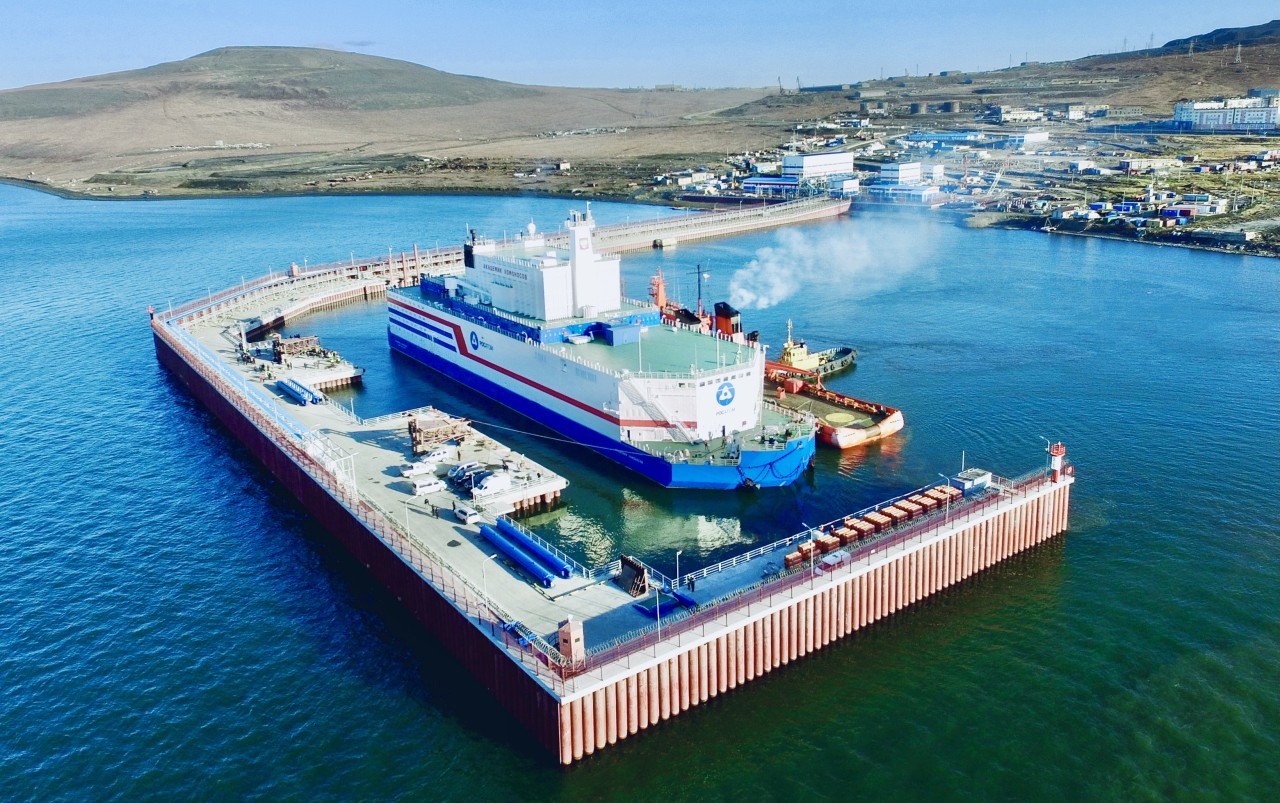
The FNPP includes two KLT-40S reactor units. In such reactors, nuclear fuel is not replaced in the same way as in standard NPPs – partial replacement of fuel once every 12-18 months. Instead, once every few years the entire reactor core is replaced with and a full load of fresh fuel.
The KLT-40S reactor cores have a number of advantages compared with standard NPPs. For the first time, a cassette core was used, which made it possible to increase the fuel cycle to 3-3.5 years before refuelling, and also reduce by one and a half times the fuel component in the cost of the electricity produced. The operating experience of the FNPP provided the basis for the design of the new series of nuclear icebreaker reactors (series 22220). Currently, three such icebreakers have been launched.
The Akademik Lomonosov was connected to the power grid in December 2019, and put into commercial operation in May 2020.
Electricity generation from the FNPP at the end of 2023 amounted to 194 GWh. The population of Pevek is just over 4,000 people. However, the plant can potentially provide electricity to a city with a population of up to 100,000. The FNPP solved two problems. Firstly, it replaced the retiring capacities of the Bilibino Nuclear Power Plant, which has been operating since 1974, as well as the Chaunskaya Thermal Power Plant, which is more than 70 years old. It also supplies power to the main mining enterprises located in western Chukotka. In September, a 490 km 110 kilovolt power transmission line was put into operation connecting Pevek and Bilibino.
Image courtesy of TVEL
- Terms and conditions
- Privacy Policy
- Newsletter sign up
- Digital Edition
- Editorial Standards

Explore the 2023–24 MIT Sloan Year in Review.
Smart. Open. Grounded. Inventive. Read our Ideas Made to Matter.
Which program is right for you?

Through intellectual rigor and experiential learning, this full-time, two-year MBA program develops leaders who make a difference in the world.
A rigorous, hands-on program that prepares adaptive problem solvers for premier finance careers.
A 12-month program focused on applying the tools of modern data science, optimization and machine learning to solve real-world business problems.
Earn your MBA and SM in engineering with this transformative two-year program.
Combine an international MBA with a deep dive into management science. A special opportunity for partner and affiliate schools only.
A doctoral program that produces outstanding scholars who are leading in their fields of research.
Bring a business perspective to your technical and quantitative expertise with a bachelor’s degree in management, business analytics, or finance.
A joint program for mid-career professionals that integrates engineering and systems thinking. Earn your master’s degree in engineering and management.
An interdisciplinary program that combines engineering, management, and design, leading to a master’s degree in engineering and management.
Executive Programs
A full-time MBA program for mid-career leaders eager to dedicate one year of discovery for a lifetime of impact.
This 20-month MBA program equips experienced executives to enhance their impact on their organizations and the world.
Non-degree programs for senior executives and high-potential managers.
A non-degree, customizable program for mid-career professionals.
Celebrating Our Alumnae
Empowering Black Entrepreneurs Through Community
The MIT 24-Hour Challenge Returns on Pi Day 2024
Credit: iStock / Djahan
Building Operations for Africa’s Most Valuable Fintech
Andrew Husband
Mar 25, 2024
Awa Koné , MBA ’17, always wanted to get involved in Africa’s bustling business ecosystem. Since early 2020, she has been doing just that at the fintech startup Flutterwave .
Awa Koné, MBA ’17, Global Head of Operations, Flutterwave
“I was invited to come to Lagos and spend a week with Flutterwave to get a sense of what they were been building,” says Koné, who previously worked in Zurich for the European reinsurance giant Swiss Re. “That week turned into three weeks, and I ended up getting an offer.”
As global head of operations for the payments platform, Koné appreciates everything she learned during her time at Flutterwave, which has greatly expanded on her experiences as a student in the MIT Sloan MBA program and a leader in American and European companies.
“We have people in Europe, in the United States, and in many African countries, so understanding how business is done across multiple geographies has been a very interesting challenge, both from the perspective of my team and for the partners we work with,” she says.
Business across geographies
Upon starting her MBA at MIT, Koné knew that she wanted to be involved in business in Africa. “I’d never worked or traveled much in Africa, even though that’s where I’m from, but I wanted to build a network there,” she says.
After graduating from MIT Sloan in 2017, Koné served as a consulting actuary for the Seattle-based firm Milliman, then joined Swiss Re as vice president of West and Central Africa, a role that required frequent travel throughout the continent. Then, in late 2019, she reconnected with the Flutterwave team—including co-founder and CEO Olugbengba Agboola, whom she previously met at the MIT Sloan Africa Innovate Conference .
Yet the first nodes of Koné’s African network were created long before then. As an MBA student, she served as president of the MIT Sloan Africa Business Club , which hosts events like the annual Africa Innovate Conference, exposes students to business and job opportunities across the continent, and facilitates networking.
As part of one of her classes, Koné also led trips to Namibia and Botswana as part of the MIT Sloan Study Tours program . She also participated in various trips on the continent through MIT International Science and Technology Initiatives (MISTI) , MIT for Africa, and MIT Global Startup Labs (GSL) , which provide students with immersive and educational travel opportunities. Along with her studies, these experiences introduced Koné to presidents, ambassadors, and business leaders whose lived lessons were instrumental in teaching MIT Sloan students about global perspectives.
“I wanted the ability to see the world and to understand business across different geographies. This was important to me, especially in the context of Africa,” says Koné. “They gave me a lot of exposure to the perspective of cultural diversity in the workplace.”
The importance of listening
Another important lesson Koné took to heart at MIT Sloan concerned the necessity of listening to others as a key leadership skill.
Many of the countries she visited have not always been portrayed favorably in Western media. Koné suggests that had it not been for the opportunity to meet visit these places and meet local leaders and individuals, her knowledge of them would have remained limited and biased.
“It’s important to go out there and listen, to seek the truth, and to be open to the fact that there may be more than one side to every story,” she says.
Koné also traces her emphasis on listening to 15.321 Improvisational Leadership, the popular course taught by Daena Giardella (Senior Lecturer). Throughout the highly experiential and interactive class, Giardella guides students through numerous group exercises and pairings designed to practice their improvisational skills as future business leaders.
One of the most monumental lessons of the course has to do with active or “high stakes” listening, and Koné sees evidence of its success in her work at Flutterwave, where she has enjoyed the challenge of helping to build a team from the ground up.
“It was such a powerful class for me because it really helped me, not only from a communication perspective but from a decision-making perspective,” she says. “Numbers are easy for me, but managing people is not always. That’s a skill I have had to hone, especially at a smaller startup like Flutterwave. It’s been a very challenging experience, but it has also been very fun and rewarding to build the culture and the team. As the team grows, I grow. We’re expanding and learning together.”
Crafting a new (culinary) narrative
As her work at Flutterwave continues, Koné is also pursuing new ways through which to explore her growing African business network.
Her latest is N/UM, a premium consumer packaged goods company she co-founded with former Swiss Re colleague Kudzai Bingepinge that boasts a line of artisan salts hand-harvested in Southern Africa. The pair’s mission is to use African gastronomy and storytelling to craft a new narrative for the continent.
These continued networking efforts reflect the biggest lesson that Koné and many of her fellow MIT Sloan alumni learned upon graduation.
“One of the biggest challenges we experience is thinking that once we get our diploma, everything will be perfect, but in reality, that’s only the beginning. Now, we have to figure out what to do next,” says Koné.
“My biggest piece of advice for any recent MIT Sloan graduates or younger alumni is to just continue on your path. It’s not always easy, but that’s the beauty of the experience. Life is the ultimate teacher.”
Related Posts


For the first time Rosatom Fuel Division supplied fresh nuclear fuel to the world’s only floating nuclear cogeneration plant in the Arctic
The fuel was supplied to the northernmost town of Russia along the Northern Sea Route.

The first in the history of the power plant refueling, that is, the replacement of spent nuclear fuel with fresh one, is planned to begin before 2024. The manufacturer of nuclear fuel for all Russian nuclear icebreakers, as well as the Akademik Lomonosov FNPP, is Machinery Manufacturing Plant, Joint-Stock Company (MSZ JSC), a company of Rosatom Fuel Company TVEL that is based in Elektrostal, Moscow Region.
The FNPP includes two KLT-40S reactors of the icebreaking type. Unlike convenient ground-based large reactors (that require partial replacement of fuel rods once every 12-18 months), in the case of these reactors, the refueling takes place once every few years and includes unloading of the entire reactor core and loading of fresh fuel into the reactor.
The cores of KLT-40 reactors of the Akademik Lomonosov floating power unit have a number of advantages compared to the reference ones: a cassette core was used for the first time in the history of the unit, which made it possible to increase the fuel energy resource to 3-3.5 years between refuelings, and also reduce the fuel component of the electricity cost by one and a half times. The FNPP operating experience formed the basis for the designs of reactors for nuclear icebreakers of the newest series 22220. Three such icebreakers have been launched by now.
For the first time the power units of the Akademik Lomonosov floating nuclear power plant were connected to the grid in December 2019, and put into commercial operation in May 2020. The supply of nuclear fuel from Elektrostal to Pevek and its loading into the second reactor is planned for 2024. The total power of the Akademik Lomonosov FNPP, supplied to the coastal grid of Pevek without thermal energy consumption on shore, is about 76 MW, being about 44 MW in the maximum thermal power supply mode. The FNPP generated 194 million kWh according to the results of 2023. The population of Pevek is just a little more than 4 thousand, while the FNPP has a potential for supplying electricity to a city with a population of up to 100 thousand people. After the FNPP commissioning two goals were achieved. These include first of all the replacement of the retiring capacities of the Bilibino NPP, which has been operating since 1974, as well as the Chaunskaya TPP, which has already been operating for more than 70 years. Secondly, energy is supplied to the main mining companies in western Chukotka in the Chaun-Bilibino energy hub a large ore and metal cluster, including gold mining companies and projects related to the development of the Baimsk ore zone. In September 2023, a 110 kilovolt power transmission line with a length of 490 kilometers was put into operation, connecting the towns of Pevek and Bilibino. The line increased the reliability of energy supply from the FNPP to both Bilibino consumers and mining companies, the largest of which is the Baimsky GOK. The comprehensive development of the Russian Arctic is a national strategic priority. To increase the NSR traffic is of paramount importance for accomplishment of the tasks set in the field of cargo shipping. This logistics corridor is being developed due regular freight voyages, construction of new nuclear-powered icebreakers and modernization of the relevant infrastructure. Rosatom companies are actively involved in this work. Rosatom Fuel Company TVEL (Rosatom Fuel Division) includes companies fabricating nuclear fuel, converting and enriching uranium, manufacturing gas centrifuges, conducting researches and producing designs. As the only nuclear fuel supplier to Russian NPPs, TVEL supplies fuel for a total of 75 power reactors in 15 countries, for research reactors in nine countries, as well as for propulsion reactors of the Russian nuclear fleet. Every sixth power reactor in the world runs on TVEL fuel. Rosatom Fuel Division is the world’s largest producer of enriched uranium and the leader on the global stable isotope market. The Fuel Division is actively developing new businesses in chemistry, metallurgy, energy storage technologies, 3D printing, digital products, and decommissioning of nuclear facilities. TVEL also includes Rosatom integrators for additive technologies and electricity storage systems. Rosenergoatom, Joint-Stock Company is part of Rosatom Electric Power Division and one of the largest companies in the industry acting as an operator of nuclear power plants. It includes, as its branches, 11 operating NPPs, including the FNPP, the Scientific and Technical Center for Emergency Operations at NPPs, Design and Engineering as well as Technological companies. In total, 37 power units with a total installed capacity of over 29.5 GW are in operation at 11 nuclear power plants in Russia. Machinery Manufacturing Plant, Joint-Stock Company (MSZ JSC, Elektrostal) is one of the world’s largest manufacturers of fuel for nuclear power plants. The company produces fuel assemblies for VVER-440, VVER-1000, RBMK-1000, BN-600,800, VK-50, EGP-6; powders and fuel pellets intended for supply to foreign customers. It also produces nuclear fuel for research reactors. The plant belongs to the TVEL Fuel Company of Rosatom.
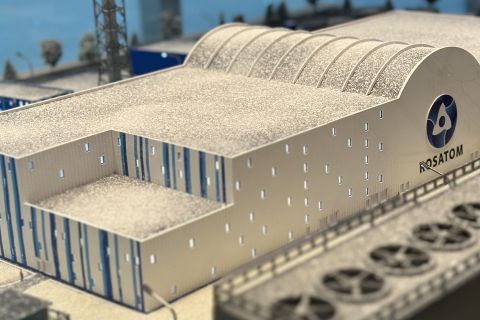

Rosatom obtained a license for the first land-based SMR in Russia
On April 21, Rosenergoatom obtained a license issued by Rostekhnadzor to construct the Yakutsk land-based SMR in the Ust-Yansky District of the Republic of Sakha (Yakutia).

ROSATOM and FEDC agree to cooperate in the construction of Russia's first onshore SNPP
ROSATOM and FEDC have signed a cooperation agreement to build Russia's first onshore SNPP in Yakutia.
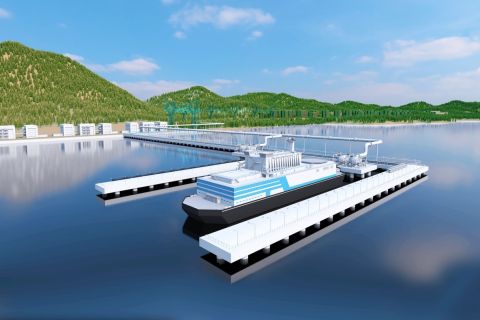
Rosatom develops nuclear fuel for modernized floating power units
Rosatom has completed the development of nuclear fuel for the RITM-200S small modular reactor designed for the upgraded floating power units.

Turn Your Curiosity Into Discovery
Latest facts.

9 Longevity Supplement Facts A Growing Global Industry

5 Interesting Facts about Automotive Transport
40 facts about elektrostal.
Written by Lanette Mayes
Modified & Updated: 02 Mar 2024
Reviewed by Jessica Corbett

Elektrostal is a vibrant city located in the Moscow Oblast region of Russia. With a rich history, stunning architecture, and a thriving community, Elektrostal is a city that has much to offer. Whether you are a history buff, nature enthusiast, or simply curious about different cultures, Elektrostal is sure to captivate you.
This article will provide you with 40 fascinating facts about Elektrostal, giving you a better understanding of why this city is worth exploring. From its origins as an industrial hub to its modern-day charm, we will delve into the various aspects that make Elektrostal a unique and must-visit destination.
So, join us as we uncover the hidden treasures of Elektrostal and discover what makes this city a true gem in the heart of Russia.
Key Takeaways:
- Elektrostal, known as the “Motor City of Russia,” is a vibrant and growing city with a rich industrial history, offering diverse cultural experiences and a strong commitment to environmental sustainability.
- With its convenient location near Moscow, Elektrostal provides a picturesque landscape, vibrant nightlife, and a range of recreational activities, making it an ideal destination for residents and visitors alike.
Known as the “Motor City of Russia.”
Elektrostal, a city located in the Moscow Oblast region of Russia, earned the nickname “Motor City” due to its significant involvement in the automotive industry.
Home to the Elektrostal Metallurgical Plant.
Elektrostal is renowned for its metallurgical plant, which has been producing high-quality steel and alloys since its establishment in 1916.
Boasts a rich industrial heritage.
Elektrostal has a long history of industrial development, contributing to the growth and progress of the region.
Founded in 1916.
The city of Elektrostal was founded in 1916 as a result of the construction of the Elektrostal Metallurgical Plant.
Located approximately 50 kilometers east of Moscow.
Elektrostal is situated in close proximity to the Russian capital, making it easily accessible for both residents and visitors.
Known for its vibrant cultural scene.
Elektrostal is home to several cultural institutions, including museums, theaters, and art galleries that showcase the city’s rich artistic heritage.
A popular destination for nature lovers.
Surrounded by picturesque landscapes and forests, Elektrostal offers ample opportunities for outdoor activities such as hiking, camping, and birdwatching.
Hosts the annual Elektrostal City Day celebrations.
Every year, Elektrostal organizes festive events and activities to celebrate its founding, bringing together residents and visitors in a spirit of unity and joy.
Has a population of approximately 160,000 people.
Elektrostal is home to a diverse and vibrant community of around 160,000 residents, contributing to its dynamic atmosphere.
Boasts excellent education facilities.
The city is known for its well-established educational institutions, providing quality education to students of all ages.
A center for scientific research and innovation.
Elektrostal serves as an important hub for scientific research, particularly in the fields of metallurgy, materials science, and engineering.
Surrounded by picturesque lakes.
The city is blessed with numerous beautiful lakes, offering scenic views and recreational opportunities for locals and visitors alike.
Well-connected transportation system.
Elektrostal benefits from an efficient transportation network, including highways, railways, and public transportation options, ensuring convenient travel within and beyond the city.
Famous for its traditional Russian cuisine.
Food enthusiasts can indulge in authentic Russian dishes at numerous restaurants and cafes scattered throughout Elektrostal.
Home to notable architectural landmarks.
Elektrostal boasts impressive architecture, including the Church of the Transfiguration of the Lord and the Elektrostal Palace of Culture.
Offers a wide range of recreational facilities.
Residents and visitors can enjoy various recreational activities, such as sports complexes, swimming pools, and fitness centers, enhancing the overall quality of life.
Provides a high standard of healthcare.
Elektrostal is equipped with modern medical facilities, ensuring residents have access to quality healthcare services.
Home to the Elektrostal History Museum.
The Elektrostal History Museum showcases the city’s fascinating past through exhibitions and displays.
A hub for sports enthusiasts.
Elektrostal is passionate about sports, with numerous stadiums, arenas, and sports clubs offering opportunities for athletes and spectators.
Celebrates diverse cultural festivals.
Throughout the year, Elektrostal hosts a variety of cultural festivals, celebrating different ethnicities, traditions, and art forms.
Electric power played a significant role in its early development.
Elektrostal owes its name and initial growth to the establishment of electric power stations and the utilization of electricity in the industrial sector.
Boasts a thriving economy.
The city’s strong industrial base, coupled with its strategic location near Moscow, has contributed to Elektrostal’s prosperous economic status.
Houses the Elektrostal Drama Theater.
The Elektrostal Drama Theater is a cultural centerpiece, attracting theater enthusiasts from far and wide.
Popular destination for winter sports.
Elektrostal’s proximity to ski resorts and winter sport facilities makes it a favorite destination for skiing, snowboarding, and other winter activities.
Promotes environmental sustainability.
Elektrostal prioritizes environmental protection and sustainability, implementing initiatives to reduce pollution and preserve natural resources.
Home to renowned educational institutions.
Elektrostal is known for its prestigious schools and universities, offering a wide range of academic programs to students.
Committed to cultural preservation.
The city values its cultural heritage and takes active steps to preserve and promote traditional customs, crafts, and arts.
Hosts an annual International Film Festival.
The Elektrostal International Film Festival attracts filmmakers and cinema enthusiasts from around the world, showcasing a diverse range of films.
Encourages entrepreneurship and innovation.
Elektrostal supports aspiring entrepreneurs and fosters a culture of innovation, providing opportunities for startups and business development.
Offers a range of housing options.
Elektrostal provides diverse housing options, including apartments, houses, and residential complexes, catering to different lifestyles and budgets.
Home to notable sports teams.
Elektrostal is proud of its sports legacy, with several successful sports teams competing at regional and national levels.
Boasts a vibrant nightlife scene.
Residents and visitors can enjoy a lively nightlife in Elektrostal, with numerous bars, clubs, and entertainment venues.
Promotes cultural exchange and international relations.
Elektrostal actively engages in international partnerships, cultural exchanges, and diplomatic collaborations to foster global connections.
Surrounded by beautiful nature reserves.
Nearby nature reserves, such as the Barybino Forest and Luchinskoye Lake, offer opportunities for nature enthusiasts to explore and appreciate the region’s biodiversity.
Commemorates historical events.
The city pays tribute to significant historical events through memorials, monuments, and exhibitions, ensuring the preservation of collective memory.
Promotes sports and youth development.
Elektrostal invests in sports infrastructure and programs to encourage youth participation, health, and physical fitness.
Hosts annual cultural and artistic festivals.
Throughout the year, Elektrostal celebrates its cultural diversity through festivals dedicated to music, dance, art, and theater.
Provides a picturesque landscape for photography enthusiasts.
The city’s scenic beauty, architectural landmarks, and natural surroundings make it a paradise for photographers.
Connects to Moscow via a direct train line.
The convenient train connection between Elektrostal and Moscow makes commuting between the two cities effortless.
A city with a bright future.
Elektrostal continues to grow and develop, aiming to become a model city in terms of infrastructure, sustainability, and quality of life for its residents.
In conclusion, Elektrostal is a fascinating city with a rich history and a vibrant present. From its origins as a center of steel production to its modern-day status as a hub for education and industry, Elektrostal has plenty to offer both residents and visitors. With its beautiful parks, cultural attractions, and proximity to Moscow, there is no shortage of things to see and do in this dynamic city. Whether you’re interested in exploring its historical landmarks, enjoying outdoor activities, or immersing yourself in the local culture, Elektrostal has something for everyone. So, next time you find yourself in the Moscow region, don’t miss the opportunity to discover the hidden gems of Elektrostal.
Q: What is the population of Elektrostal?
A: As of the latest data, the population of Elektrostal is approximately XXXX.
Q: How far is Elektrostal from Moscow?
A: Elektrostal is located approximately XX kilometers away from Moscow.
Q: Are there any famous landmarks in Elektrostal?
A: Yes, Elektrostal is home to several notable landmarks, including XXXX and XXXX.
Q: What industries are prominent in Elektrostal?
A: Elektrostal is known for its steel production industry and is also a center for engineering and manufacturing.
Q: Are there any universities or educational institutions in Elektrostal?
A: Yes, Elektrostal is home to XXXX University and several other educational institutions.
Q: What are some popular outdoor activities in Elektrostal?
A: Elektrostal offers several outdoor activities, such as hiking, cycling, and picnicking in its beautiful parks.
Q: Is Elektrostal well-connected in terms of transportation?
A: Yes, Elektrostal has good transportation links, including trains and buses, making it easily accessible from nearby cities.
Q: Are there any annual events or festivals in Elektrostal?
A: Yes, Elektrostal hosts various events and festivals throughout the year, including XXXX and XXXX.
Was this page helpful?
Our commitment to delivering trustworthy and engaging content is at the heart of what we do. Each fact on our site is contributed by real users like you, bringing a wealth of diverse insights and information. To ensure the highest standards of accuracy and reliability, our dedicated editors meticulously review each submission. This process guarantees that the facts we share are not only fascinating but also credible. Trust in our commitment to quality and authenticity as you explore and learn with us.
Share this Fact:

IMAGES
COMMENTS
MIT Alumni Association. 600 Memorial Drive Cambridge, MA 02139 617-253-8200
MIT Alumni Association. 600 Memorial Drive Cambridge, MA 02139 617-253-8200
*With optional 2-day extension: July 23, 2023 ... MIT alumni, other local businesspeople, share ideas with high school and college students, and indulge in the arts, crafts, and cuisine that make Ghana special. Get ready to explore Accra, Kumasi, Tamale, rural ... The travel adapter for use in Ghana is the same as for the UK.
MIT alumni, students, affiliates, parents of MIT students, and surviving spouses of MIT alumni or faculty: you can create an account here. For other questions / comments please email [email protected]. MIT Alumni Association 600 Memorial Drive Cambridge, MA 02139 617-253-8200 Communities; Events; Careers; Learn; Volunteer ...
We are excited to invite you back to the MIT campus for Family Weekend 2023 on October 27-28! ... Explore a list of additional hotel and travel recommendations in Cambridge and Boston. Where To Stay. ... The MIT Alumni Association proudly sponsors MIT Families. 600 Memorial Drive, Cambridge, MA 02139 ...
The MIT Alumni Leadership Conference (ALC)—celebrating those alumni and friends ... While no trips ran in FY2021, the Alumni Travel Program held five educational webinars led by MIT faculty. Four were managed by the MITAA, with a total of 304 participants. ... 2023 to receive their rings, regardless of financial circumstances.
MIT alumni participate in the Association's Serve and Celebrate event in San Diego. For the MIT Alumni Association (MITAA), Fiscal Year 2023 was a year focused on presidential transition, reawakening our alumni community from Covid "hibernation," and creating a strategic plan to carry the MITAA from 2023 to 2026. ... Read about the MIT ...
Funds are available for use from July 2023 through June 2024. The Alumni Funds Selection Committee encourages sharing of results and good practices. Grant recipients will be required to submit a final report on their project at the end of their funding period, August 1, 2024. Relevant report details will be made available to the MIT community.
MIT's nearly 147,000 alumni represent one of the most talented, innovative, and networked communities on the planet. Many remain deeply involved in the life of the Institute. They volunteer, serve on boards, head up regional alumni clubs, and generously support MIT's students, faculty, and staff. As individuals, their contributions are extraordinary.
Travel : Ocean Cruise : River Cruise : Train Travel Airfare Included Active Travel Wildlife No Single Supplement: OTHER TRIP TYPES. New Alumni and Active Adventure Tours ... New Alumni Tour (Ages 22 - 35) Cruise the Rhine and Moselle Rivers. May 17 - 25, 2024. Normandy - Deauville May 17 - 25, 2024 Sep 6 - 14, 2024.
Meet your dedicated Michigan Alumni Travel team and get answers to some of the most commonly asked questions about traveling with us. Learn More. Travel Insurance. While every effort is made to ensure your vacation is a safe and happy one, unexpected events can occur. Get extra peace of mind with travel insurance.
Watch Past Events. MIT Sloan Reunion 2023 Dean's Fireside Chat featuring Brad Feld, SB '87, SM '88. MIT Sloan Reunion 2023 State of the School with Dean David Schmittlein. 2022 MIT Sloan Women's Conference Monica Lee, EMBA '19, Closing Keynote. Visit the MIT Sloan Alumni YouTube Page. There are endless ways to engage with MIT Sloan.
Wolfram held the U.S. Treasury post from March 2021 to October 2022 while on leave from UC Berkeley. In July 2023, she joined MIT Sloan School of Management partly to be geographically closer to the policymakers of the nation's capital. She's also excited about the work taking place elsewhere at the Institute to stay ahead of climate change.
The annual MIT LGO Alumni Conference is a major event where hundreds gather to address timely issues in operations and industry. Alumni Conference: The 2023 Alumni Conference will be held at MIT Campus over November 2-3, 2023. Alumni Board: Leaders in the LGO alumni community take responsibility to further the bond between the LGO program and ...
Other hobbies include bicycling and travel, especially if long-distance hiking is involved. In 2012, he trekked 500 miles across northern France and Spain on the Camino de Santiago, a journey he plans to repeat in 2024. ... 2023 Graduate of the Last Decade (GOLD) Ad Astra Alumni Awards. Angie Lassman '12 BS, '14 MS.
Have a look (7)Elektroskaya Station before backtracking into the center of Moscow, stopping off at (8)Baumskaya, getting off the Dark Blue/#3 line at (9)Ploschad Revolyutsii. Change to the Dark Green/#2 line and go south one stop to see (10)Novokuznetskaya Station. Check out our new Moscow Indie Travel Guide, book a flight to Moscow and read 10 ...
17 October 2023 . Print Email . Rosatom's fuel company TVEL has supplied nuclear fuel for reactor 1 of the world's only floating NPP (FNPP), the Akademik Lomonosov, moored at the city of Pevek, in Russia's Chukotka Autonomous Okrug. The supply of fuel was transported along the Northern Sea Route. The first ever refuelling of the FNPP is ...
Over 1,300 alumni and friends returned to Cambridge for classroom sessions, alumni panels, networking opportunities, and social events. Keep scrolling for highlights from MIT Sloan Reunion 2023. Reunion 2023
Building Operations for Africa's Most Valuable Fintech. By. Andrew Husband. Mar 25, 2024. Awa Koné, MBA '17, always wanted to get involved in Africa's bustling business ecosystem. Since early 2020, she has been doing just that at the fintech startup Flutterwave. Awa Koné, MBA '17, Global Head of Operations, Flutterwave.
The FNPP generated 194 million kWh according to the results of 2023. The population of Pevek is just a little more than 4 thousand, while the FNPP has a potential for supplying electricity to a city with a population of up to 100 thousand people. After the FNPP commissioning two goals were achieved. These include first of all the replacement of ...
Lanette Mayes. Elektrostal is a vibrant city located in the Moscow Oblast region of Russia. With a rich history, stunning architecture, and a thriving community, Elektrostal is a city that has much to offer. Whether you are a history buff, nature enthusiast, or simply curious about different cultures, Elektrostal is sure to captivate you.